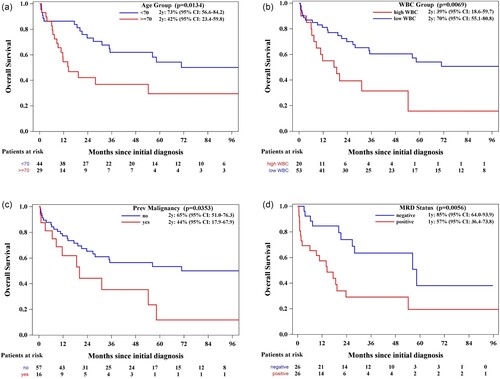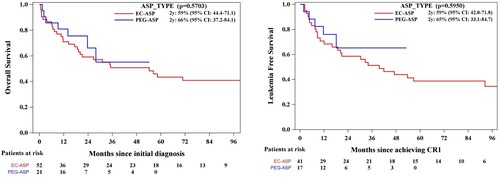Figures & data
Table 1. Patients’ characteristics.
Table 2. Adverse event rates at any phase during therapy.
Figure 2. Comparison of adverse event rates between patients who received EC-ASP vs PEG-ASP. This figure presents a side-by-side comparison of the adverse events elucidating a comparison between the two formulations.

Figure 4. (a) Overall survival (OS) by age group. Stratification by age, with a specific focus on patients aged 70 years or older, who had worse OS rates (p = 0.0134), indicating the impact of age on treatment outcomes. (b) Overall survival (OS) by white blood cell count (WBC). Categorizing according to white blood cell count, revealed that patients with a WBC count greater than 30 x 109/L exhibited poorer OS (p = 0.0069), underscoring the prognostic value of WBC count. (c) Overall survival by history of previous malignancy. Patients with a history of malignancy had poorer OS (p = 0.0353), which highlights the influence of pre-existing conditions on treatment efficacy. (d) Overall survival by measurable residual Disease (MRD) status post-induction. This figure evaluates overall survival rates based on MRD status after induction therapy, demonstrating that MRD-positive patients had significantly poorer OS (p = 0.0056), emphasizing the prognostic importance of MRD status.

Figure 5. Overall survival and leukemia-free survival by type of asparaginase used, noting no significant differences in outcomes.

Table 3. Univariate and multivariable overall survival analysis.


